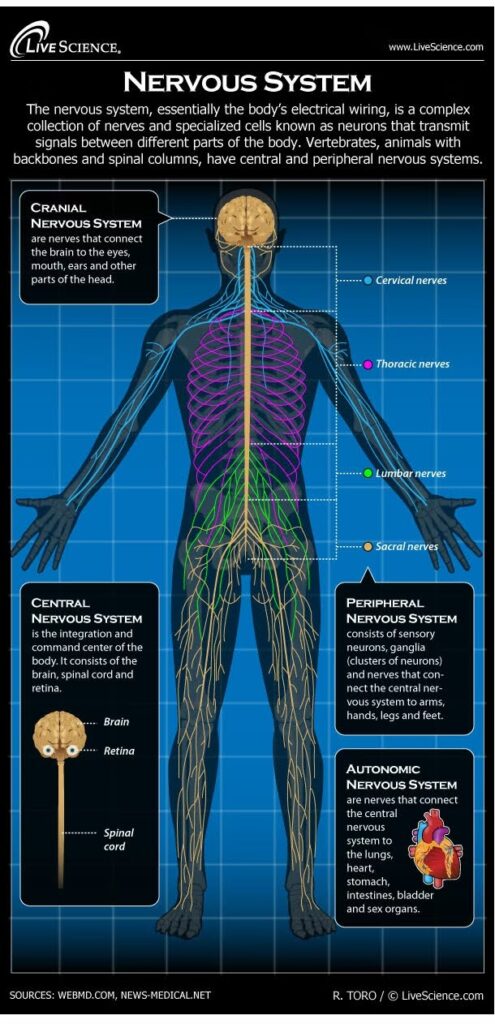The Anusara Sadhana: Your Symphony of Senses
Categories: Becoming an Anusara Teacher, bhakti, community, Methodology, Philosophy, Philosophy, Professional Development


Your Symphony of Senses
Recognizing Our Full Embodied Experience
Written by Lorin Roche, SMS

5 Senses?
If you like, you can go through life thinking that you have five senses. This is the common notion: generally people say “vision, hearing smell, taste, and touch.” I don’t know who came up with this simple formula of five, but you can see it in early Greek philosophy and Indian philosophy also. I suspect that whoever came up with this didn’t dance. How could anyone leave out the sense of balance?
You could also get real and not let old theoretical notions limit your experience of your own body.

How About 25 Senses?
If you get into it, get into your body and start exploring, you might find a bunch more senses. Inside of touch, for example there are nuances—very light touch like the tickle of the hair on your arms from a breeze, and deep touch like the firm fingers of a massage therapist. These kind of deserve their own nomenclature. There is a world of sensations inside of our connective tissue when we’re flowing through an asana sequence.
When we are delighting in pranayama and meditation, sometimes our senses open up and we feel we are perceiving prana as electricity, as juiciness, and as love flowing in our bodies. How do we describe this inner universe of sensation? Is this simply “touch?”
Walk around in nature, for example after a rain, or when you are alone in new terrain, and notice how your senses open. As you sniff the air, feel the tingle of your skin, take in the light, and feel the urge to move, and then take in another breath that feels like an elixir, you are in the realm of the natural senses.
The yoga literature describes many realms of sensing that open to our awareness, and the terms are generally hidden somewhat in the metaphoric language typical of Sanskrit. For example, a word used to refer to the senses is indriya.
Senses as Companions of the Divine
Here is the dictionary listing: इन्द्रिय. indriya: “Fit for or belonging to or agreeable to Indra, the god of the senses; a companion of Indra. Power, force, the quality that belongs especially to the mighty Indra. An exhibition of power, a powerful act. Bodily power, power of the senses. Virile power. Semen virile. Faculty of sense, sense, organ of sense. The number five as a symbol of the five senses (in addition to the five organs of perception—eye, ear, nose, tongue, and skin).”
Let’s play with the images given here. Indra is the ruling energy of the gods, the devas, and the senses belong to Indra. The senses belong to the divine and are beloved of the divine creative power because they are rivers of energy and information flowing from creation to touch our awareness. Our senses are currents of pranashakti built by the genius of the life force, allowing us to witness, savor, dance with, the play of creation all around and within us.
When we are adoring the senses, they give us power. There’s a quality of virility, gusto, zest, liveliness. It is a gift to be alive.
We can see that this limiting concept of five has crept into the definition of the senses here. And I think this was kind of a mistake.
If we listen to what physiologists say, and they are building on what dancers and massage therapists say, we get a list something like this.
A Whole Symphony of Senses

- Vision: Sight, perception of light waves/particles entering the eye.
- Hearing: Perceiving sound waves vibrating our inner ears.
- Taste: Noticing flavors on the tongue and all around the mouth.
- Smell: Perceiving molecules of scent as they flow across olfactory receptors in the nose.
- Touch: Sensations of pressure, temperature, and pain through skin receptors. These can be differentiated further, if we look at nerve pathways.
- Proprioception: Awareness of the body’s position and movement. This also involves many senses, including joint position and the relation of all the limbs to all the other limbs. To coin a term angaindriya, the sense of all the limbs individually and in unison.
- Equilibrioception: Sense of balance and the relation of the body and gravity, orientation in space and time.
- Nociception: Perception of pain, including puncture, burning, stretching.
- Thermoception: Perception of temperature.
- Mechanoreception: Sensation of mechanical stimuli such as touch, pressure, vibration, and motion.
- Chemoreception: Sensing chemical stimuli, including those related to taste and smell.
- Interoception: Perception of internal bodily sensations, such as hunger, thirst, and visceral pain.
- Baroreception: Sensation of blood pressure changes.
- Stretch Receptors: Sensing of muscle stretch.
- Tension Receptors: Sensing of muscle tension.
- Electroception: Detection of electrical fields, found in some aquatic animals. A related sense in humans, not scientifically established, might be “prana sensing,” detecting the flow of the life force in your own body or that of another.
- Magnetoreception: Perception of Earth’s magnetic field, observed in some animals for navigation.
- Time Perception: Awareness of the passage of time.
- Kinesthetic Sense: Perception of the body’s movement and position in space.
- Hunger: Detecting blood sugar levels.
- Thirst Sensation: Detecting levels of hydration in the blood.
- Bladder stretch: Informing us we need to pee or poop.
- Pain Sensation: Perception of discomfort or injury.
- Itch Sensation: Perception of skin irritation, prompting a desire to scratch.
- Pressure Receptors: Sensation of pressure changes in the environment or on the body.
Many of these overlap, and you can divide them up as you like, or unify them into vast clumps, such as “kinesthesia” to include all interior senses.
The entire body is a sensory organ.

Practice Tip
Every few days for the rest of your life, spend at least a few minutes delighting in your full symphony of senses. Own them all as “my senses.” Take responsibility to attend to them and care for them.
Sometimes I spend half an hour just reviewing all the senses, celebrating each one, petting it, loving it up, then after attending to them more or less individually, sit back and simply welcome the flood of sensing.
Every tiny nuance of learning to embrace our own immediate and intimate stream of sensory experience – from the pulsating rhythms to the welcome and sometimes unwelcome surprises we encounter, from surrendering to moments of darkness to yielding to the pull of gravity, and from embracing a restfulness deeper than sleep to relishing in the surge of uplifting energies – each incremental step initially feels like acquiring a new skill. Yet, with time, these steps seamlessly integrate into your overall embrace of experience.
As sensations intensify, becoming either more pronounced or subtler, or as you sink into deeper relaxation, or learn to rest more profoundly, even the most familiar experiences can take on the guise of novelty, initiating a sense of inward astonishment and surprise.
Tantra is weaving, the practice of weaving together the elements of life, body and soul, sexuality and spirituality, individuality and community. As we weave together the many elements that are always flowing in us – the unimpeded flow of breath, the undulating motion akin to waves in water, the vast expanse of space, the brilliance of light, and the gravitational pull downwards – with each interaction gives rise to fresh combinations and permutations. When we allow it, each moment has a quality of shocking freshness and novelty and can feel as if it is asking for a distinct skill. On this path, we can feel like an eternal beginner, always learning to revel in the melody of existence, in an ongoing discovery.
Contact Lorin at:
Follow Lorin Roche on Instagram: @lorinroche
Add Lorin Roche on Facebook: Lorin.Roche
Visit Lorin Roche Website for more information about his work.




